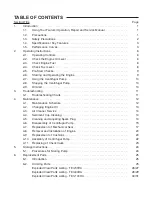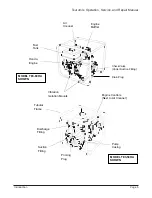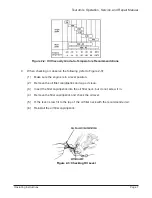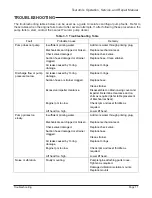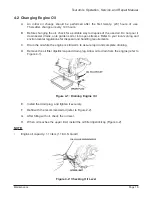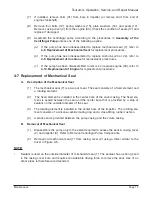
• Do not operate the centrifugal pump before you have read and understand the instructions
and the engine manufacturer’s manual. Failure to do so could result in personal injury or
equipment damage.
1-3 Safety Precautions
WARNING:
• IN ORDER TO ASSURE SAFE AND EFFICIENT OPERATION OF THE CENTRIFUGAL PUMP,
OPERATORS SHOULD READ AND COMPLY WITH THE FOLLOWING SAFETY PRECAU-
TIONS.
• Do not operate the centrifugal pump near gasoline or gaseous fuels because of the poten-
tial danger from explosion or fire.
• Do not fill the fuel tank with fuel while the engine is running.
Be careful not to spill fuel during
refueling. If fuel is spilled, wipe it off and let it dry before starting the engine.
• Do not smoke or use an open flame near the fuel tank.
• Do not place flammable materials near the centrifugal pump.
Be careful not to place fuel,
matches, gunpowder, oily cloths, straw, or any other combustibles near the centrifugal pump.
• Do not operate the centrifugal pump inside a room, cave, tunnel, or other insufficiently ven-
tilated area.
Always operate the centrifugal pump in a well-ventilated area. The engine may
become overheated, and the poisonous carbon monoxide gas contained in the exhaust gases will
endanger human lives.
• Keep the centrifugal pump at least 1 meter (3 feet) away from any structure or building dur-
ing use.
When a centrifugal pump is located close to a building or nearby equipment, heat and
exhaust from the engine will cause the surrounding temperature to rise. This will degrade the
engine’s cooling efficiency, causing overheating.
• Do not enclose the centrifugal pump nor cover it with a box.
The centrifugal pump has a built-
in, forced-air cooling system, and may become overheated if it is enclosed.
• Operate the centrifugal pump on a level surface.
It is not necessary to prepare a special foun-
dation for the centrifugal pump. However, the centrifugal pump will vibrate on an irregular surface.
Therefore, choose a level place without surface irregularities.
• Shutoff the centrifugal pump when moving the centrifugal pump to another work site.
It the
centrifugal pump is tilted or moved during operation, fuel may spill and/or the centrifugal pump may
tip over, causing a hazardous situation. Proper lubrication cannot be expected if the centrifugal
pump is operated on a steep incline or slope. In such a case, the piston may seize; it may seize
even if the oil is above the upper level.
Page 2
Introduction
Tsurumi’s Operation, Service, and Repair Manual



